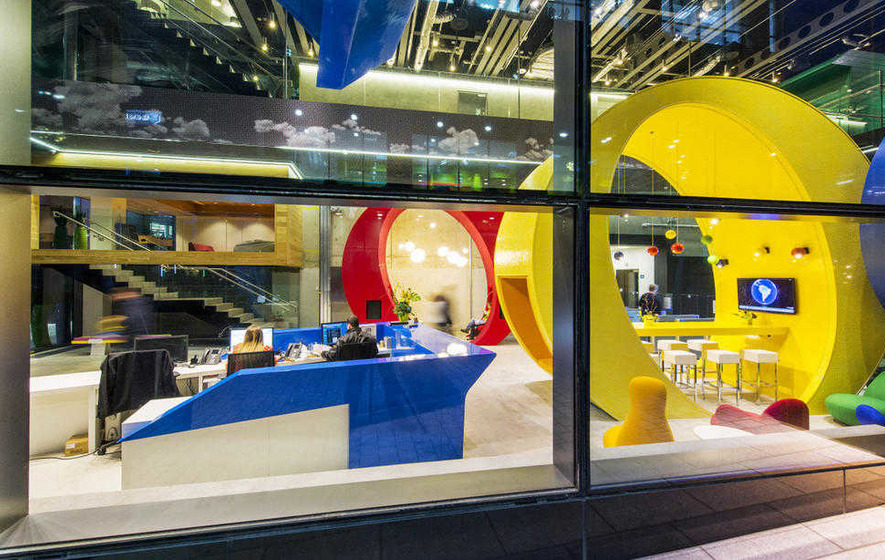
If you’ve been a manager in the media business over the past couple decades, you’ve more than likely participated in a few brainstorming sessions. Maybe a LOT of brainstorming sessions.
And like many traditions in the world of radio, there’s that familiar set of conventional rules that we all follow. They’re often posted in station conference rooms around the country, handed down over the decades. From Post-It Notes to the old adages (“There are no bad ideas in a brainstorm”), chances are you’ve been engaged in idea generation the same old way.
Now Google has produced new guidelines for brainstorms, and they deserve a look and consideration from those of us who are paid to come up with winning ideas. It’s hard to think of another company that has grown its brand in creative ways as much as Google. From mapping to the Nest home system to autonomous cars, Google has fearlessly connected us, informed us, and amazed us in ways that didn’t seem possible. They have been consistently innovative since their early days as an upstart search engine up against Yahoo!, Lycos, and Ask Jeeves.
In a recent article in Fast Company, Google’s head of content strategy, Veronique Lafargue, lays out the basic process Google uses to suss out ideas in a structure that makes sense and leads to actually implementing them:
-
Know the user
-
Think 10X
-
Prototype
Knowing the user – in the case of radio, the target listener – is a logical prerequisite for bringing out the best ideas. That might mean a series of Listener Advisory Groups before actually conducting the brainstorm to better pin down what’s important to the audience in the area where creativity is applied.
For example, if you’re brainstorming ideas to come up with better ways of pulling off this year’s “Rock Girl” campaign, bringing in a group of listeners who have voted and participated in these related events is a great way to connect with their needs, wants, and opinions. Radio has an edge here because most stations have viable databases that can be tapped for some pre-brainstorming conversation and investigation.

Thinking 10X gets to the root of a common radio problem – thinking too small. A “10x idea” improves upon a concept 10 times – not 10%. Google has much more scale than a radio station, but by thinking big, they’ve expanded their base of users, providing more and different ways to engage them. In radio’s case, creating events, promotions, podcasts, and other products that transcend the cume speak to an expansive point of view.
So how to think big? In many ways, Google’s next series of steps mimics typical brainstorms. They like combining ideas and generating lots of them. Deferring judgment is also part of the process.
But then the Google process moves into areas that can truly enhance conventional brainstorms. This includes writing headlines – describing an idea in six words or less. This Twitter-like, compact approach helps ideators summarize their concepts to ensure they’ll hold water. Like mini-elevator pitches, this process demands a level of clarity and focus
The Google model also calls for illustrations – using pictures to show what an idea looks like. Most of us did not excel in art, but the step of actually drawing up a concept – even for an aural medium like radio – can serve as the next jumping point where other participants on the team can see what you’re talking about.
But prototyping is the step that separates Google’s system from most station conference room brainstorms. It requires action. How often do conventional idea sessions end with loose assignments, some of which never see the light of day? At Google, the idea is to build a quick prototype in a hurry, imperfections and all, to test initial assumptions to see if the concept holds water. This is very much a product of the Internet generation where the creative team puts something rough together, and that’s it’s a matter of hacking your way to success.
Google’s brainstorming protocol is also environmental. As you can see from their Belfast lab (pictured above), different settings can bring out the best in a team. While the typical radio station or cluster doesn’t have Google’s resources for R&D, there are ways to change up the room to encourage great ideas. And that may mean leaving the room.
Many years ago, I worked with Dwight Walker at The Bone in San Francisco. Dwight was a big believer in environment. We conducted brainstorms several times a year, with Dwight booking meeting rooms in stadiums (yes, the old Candlestick Park), theme parks (Paramount’s Great America), museums, and even on a boat. These changes of venues shook up the group, getting us out of our comfort zone, and opening us up to new avenues of thought.
And that’s why brainstorms are only as good as the management teams’ ability to create the right vibe in the room that encourages idea expansion. That challenge was articulated very well in a recent “Corner Office” profile in The New York Times featuring Lisa Gersh, CEO of Goop (a wellness company).
Gersh spent time at Oxygen, the TV channel founded by former Nickelodeon exec Gerry Laybourne, along with someone named Oprah.

Gersh was a lawyer, often stuck in a room with a bunch of creatives. In these sessions, she labored to fit in and encourage freewheeling and idea generation.
As someone cut from a different cloth than the right brain idea people in the room, her body language – arms folded – gave off the wrong attitude, stifling creativity and subtly communicating a judgmental feeling.
And that’s when she learned the art of perfecting “the nod.”
As Gersh explains it, that’s “when you lean in and you nod your head and you keep nodding your head when someone is pitching an idea. That way, they get more excited about the pitch and they give you their best work. So you have to learn the nod.”
The radio business could clearly benefit from the institution of “the nod” mentality when conducting brainstorms, especially when management is in the room.
Radio has always been an odd mix of a business embedded inside a creative, carnival atmosphere. Yes, there’s big margins and handsome profits to be made, but not unless there’s the entertaining fire-eater, bearded lady, and barker. As the industry matured in the ’80s and ’90s, and companies went public, it became more difficult to balance commerce with seemingly crazy ideas. Those in suits need to encourage and engage those wearing jeans and hoodies to do their best creative work.
A great foundation for brainstorming and innovation, coupled with an openminded spirit toward the creative talent side of the business are the necessary ingredients that can keep radio healthy.
So let’s get out those Post-It Notes.
And remember to keep nodding!
- Like A Pair Of Old Jeans - April 2, 2025
- What’s Fair Is Fair - April 1, 2025
- What’s On Your Bucket List? - March 31, 2025




When I was a hands on Program Director, we used to do weekly/bi-weekly “full staff” meetings. Half the meeting was spent going over everything that was coming up, so that everyone was on the same page.
The second half of the meeting was part “friendly” encounter session/ brain storming session. So many GREAT ideas came out of those sessions.
Many of my fondest memories as a programmer and a consultant have come from brainstorming sessions. And it’s always been fascinating to realize just how many great ideas emerged from some of the least likely people. The process matters, and that’s why I’m enthusiastic about the new Google guidelines. Thanks for sharing, Lee, and for reading our blog.
Your blog is a “must read”, Fred.
Truly appreciate that from a thoughtful pro like yourself.
I’ve found giving out the brainstorming subject 24 hours in advance is effective for the introvert creative “incubators.” People bring ideas to build upon. Urban Outfitters is one of the many that never have more than 5 people in a creative session. Splitting up the larger group into teams of 4 for the initial session and then everyone back together to present/discuss/embellish, etc works well.
Less is more, as they say, and I love the idea of prepping brainstormers in advance. Thanks for the great tips, and nice to hear from you, Mark.